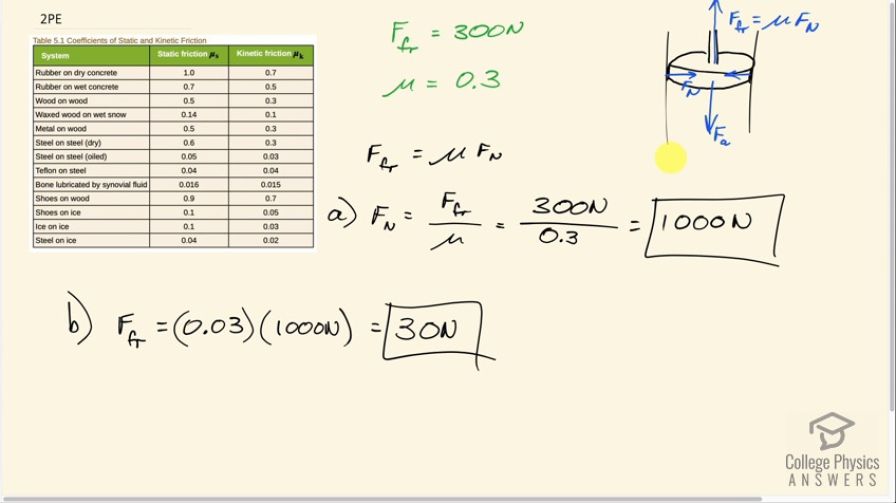Question
(a) When rebuilding her car's engine, a physics major must exert 300 N of force to insert a dry steel piston into a steel cylinder. What is the magnitude of the normal force between the piston and cylinder? (b) What is the magnitude of the force would she have to exert if the steel parts were oiled?
Final Answer
Solution video
OpenStax College Physics for AP® Courses, Chapter 5, Problem 2 (Problems & Exercises)

vote with a rating of
votes with an average rating of
.
Calculator Screenshots
Video Transcript
This is College Physics Answers with Shaun Dychko. A Physics major is pushing a piston into a cylinder and we are told the piston and cylinder are both made out of steel and they are dry and so those are pieces of information we need when we look at table [5.1] and we look at steel on steel—when it's dry— we have a coefficient of static and kinetic friction. In this case, the piston is sliding within the cylinder and so it's kinetic friction that we want to use and we are going to figure out what the normal force is being applied in total between the surface of the cylinder and the edge of the piston. Because the friction force that's opposing the motion is going to equal the coefficient of kinetic friction multiplied by the normal force and we can divide both sides by μ and solve for F N. So F N is the friction force which we assume is the same as the applied force because she's going to be moving at a constant speed—we suppose. So the friction force and the applied force are the same meaning that the friction force is going to be the 300 newtons that is the same as the applied force. Okay! So we have 300 newtons divided by coefficient of kinetic friction of 0.3 which is 1000 newtons is the total normal force. In part (b), we are asked to suppose that the steel is oiled and what friction force, and therefore, applied force would be needed then? And the answer is 0.03 because that's the coefficient of kinetic friction for oiled steel on steel multiplied by the same 1000 newton normal force—which isn't going to change— and that is 30 newtons of friction.

